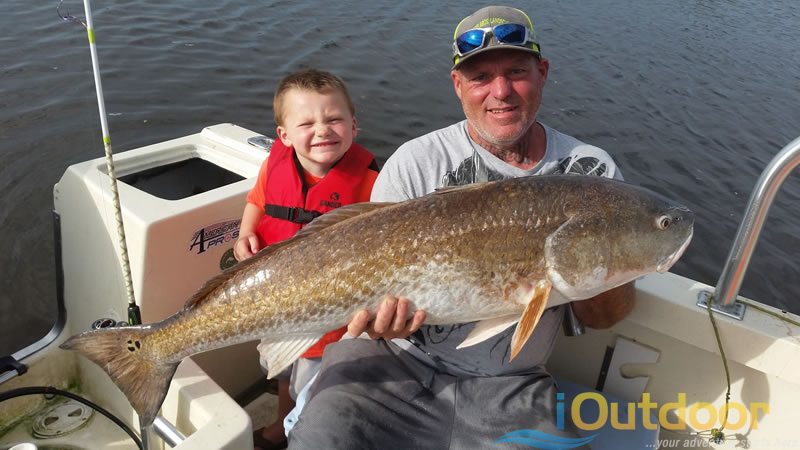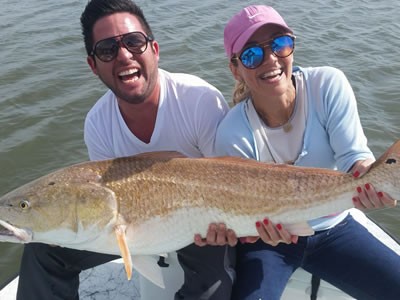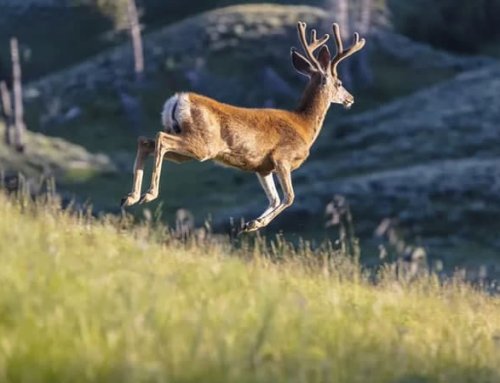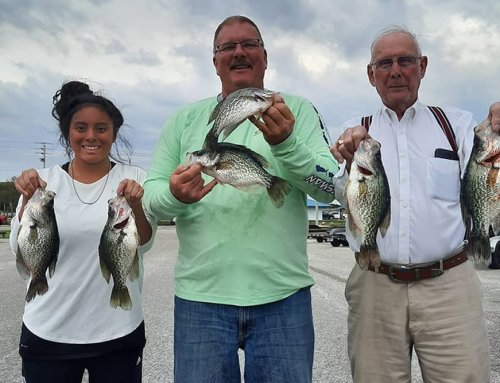How To Catch Redfish In Florida
Redfish, also called Channel Bass or Red Drum, is one of Florida’s top sought-after saltwater sport fish. They have a wide distribution on both the East Coast and Gulf Coast. In the Atlantic Ocean, they range from Massachusetts to Florida, and in the Gulf, they range from Florida to Northern Mexico.
Flats fishing in the shallow waters of the sunshine state for bull redfish is an experience like no other. Anglers worldwide travel to Florida every year to catch redfish. Their beautiful color and freight train-like runs make for an incredible fishing experience.
Characteristics
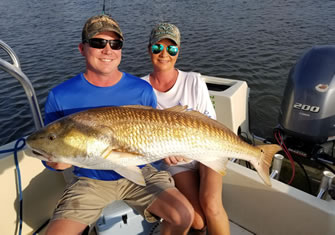
The first step to targeting and catching redfish is being able to identify one. Redfish are usually bronze or reddish in color with a white underside. One of the most distinctive features of redfish is the dark eyespot near its tail. On average, redfish measure from 11 to 24 inches depending on age and weigh up to 22 pounds. The largest fish are known as bull redfish or bull red. Generally, they are likely to exceed forty pounds during the summer during the spawning season. However, during the winter, they are more likely to be in the three to the twelve-pound range.
Red Drum is a fast-growing fish, with the juvenile redfish reaching about one pound and 11 inches in its first year. It’s considered a bull redfish when it gets over 26 inches. The name red drum comes from the male’s habit of making a knocking or drumming sound during spawning by vibrating their swim bladders. Redfish can look similar to black drums from a distance, and the colors can sometimes be easy to mix up, especially in adult redfish. However, the redfish has no chin barbels, and the black drum never has the spot near its tail.
Where To Catch Redfish In Florida
Anglers can enjoy red drum fishing almost anywhere in Florida since they are found on both Florida coasts. They live nearly everywhere on the Gulf Coast and are predominately along the upper half of the East, near Central Florida and north. East Central Florida has earned its name as the Redfish Capital of the World because of its fantastic year-round fishing in the shallow grass flats. Specifically, the Indian River, Mosquito Lagoon, and Banana River are most known for their redfish fishing and big bull redfish fishing in New Smyrna. 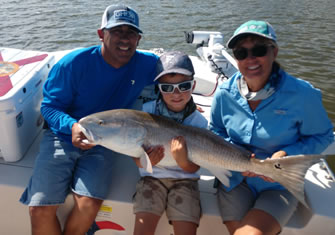
Almost all the coastal water on West Central Florida makes for good flats fishing for redfish. Specifically, Clearwater, Tampa Bay, Palm Harbor, Tarpon Springs, St. Petersburg, Sarasota Bay, and Spring Hill are filled with decent-sized redfish schools. Generally, the adult redfish move offshore to spawn and can be found offshore in large schools. They will roam into coastal rivers throughout the year sporadically or in small groups but swarm into these areas in the winter when seeking warmer water.
Where To Look
Anglers can fish for redfish in the grass flats, near mangroves, on oyster bars, off a dock, off beaches, or from a pier. The best redfish fishing is often done in shallow flats near the mangrove shorelines or grass flats. Redfish prefer shallow waters between one and four feet deep along the edges of bays with submerged vegetation. When fishing for redfish, it’s generally best to focus your attention on the areas with good structure. Redfish go to the surf zone near passes and into bays in the Fall, especially during stormy weather. Redfish live in freshwater areas, too, often being spotted in tidal creeks and rivers.
Generally, the slot size fish inhabit coastal waterways around the state. However, in the Indian River, Mosquito Lagoon, and other areas of East Central Florida, the bull reds are known to be close to shore too. For this reason, these are the best areas to catch big redfish in Florida consistently.
Redfish Capital Of The World
 The Indian River Lagoon system on the East Coast of Florida, which includes the Mosquito Lagoon, is the only place redfish live their entire lives inshore. The Banana River is another top spot for redfish in the area. Most of the redfish caught in Central Florida are caught while fishing shallow water, known as flats fishing. The fish is in the coastal lagoon year-round, making this area the redfish capital of the world and a unique place to fish.
The Indian River Lagoon system on the East Coast of Florida, which includes the Mosquito Lagoon, is the only place redfish live their entire lives inshore. The Banana River is another top spot for redfish in the area. Most of the redfish caught in Central Florida are caught while fishing shallow water, known as flats fishing. The fish is in the coastal lagoon year-round, making this area the redfish capital of the world and a unique place to fish.
Unlike other areas where most redfish leave the flats for deeper areas as they reach maturity, most of the redfish in Mosquito Lagoon and Indian River areas never leave the flats. East Central Florida is the only area anglers can stalk and sight fish a bull red in the 30 to 50-inch range on crystal clear fats. Among the big fish in this area are tons of slot size reds, creating excellent action even if you don’t get a bull.
Best Time Of Year For Bull Redfish
The odds of catching redfish are good in certain areas throughout the year, especially in Mosquito Lagoon and Indian River areas. However, the best time to catch a big bull red is in the late summer and early Fall.
Late summer and early Fall provide the highest probability of experiencing big redfish catches. The big fish living in deeper water offshore usually show up close to the shoreline near jetties and bridges during these months.
Best Time of Day
Redfish are known to eat throughout the day at varying times and tides. During the hot summer, the best time for redfish is early in the morning and late in the evening. They are almost always looking for food, but where they look may depend on certain temperatures and tides. For example, during mid-day or hot summer days, they will likely be up under the mangroves where the shade keeps the water temps cooler.
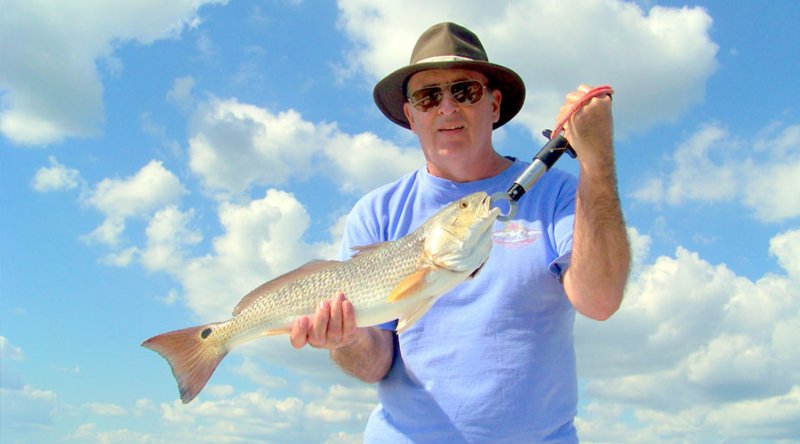 During cold winter fronts, the best time is usually once the sun is high and the grass flats have had a chance to warm up. However, anglers will often have luck early in the morning on warmer winter days in slightly deeper water. A general rule of thumb before fishing is to consider the temperature. If it’s too hot for you outside, it’s likely too hot for the redfish too. So fishing during this time, look for fish in shaded areas under docks or mangroves. Whenever it’s too cold for you, it’s probably too cold for the redfish as well. In case you’re fishing during this time, consider fishing later in the day when the temperatures warm up. Otherwise, your best bet will be in the deeper areas where the water is warmer if fishing on a frigid day. Then, as the temperature warms up throughout the day, work your way to the flats.
During cold winter fronts, the best time is usually once the sun is high and the grass flats have had a chance to warm up. However, anglers will often have luck early in the morning on warmer winter days in slightly deeper water. A general rule of thumb before fishing is to consider the temperature. If it’s too hot for you outside, it’s likely too hot for the redfish too. So fishing during this time, look for fish in shaded areas under docks or mangroves. Whenever it’s too cold for you, it’s probably too cold for the redfish as well. In case you’re fishing during this time, consider fishing later in the day when the temperatures warm up. Otherwise, your best bet will be in the deeper areas where the water is warmer if fishing on a frigid day. Then, as the temperature warms up throughout the day, work your way to the flats.
Top Baits and Lures For Catching Redfish
One of sport fishermen’s favorite things about fishing for redfish is that redfish eat a wide variety of baits, both natural and artificial. Dead natural bait, as well as live, will work. Live baits are the most effective method to consistently catching redfish, especially the big bull red. The best live baits are live shrimp, mullet, marine worms, mud minnows, Atlantic croaker, pinfish, ladyfish, and small blue crabs. When fishing for redfish in deeper drop-offs, pinfish and small mullet are usually the best live bait options. However, live minnows and shrimp are often the most effective when fishing in shallow mudflats. 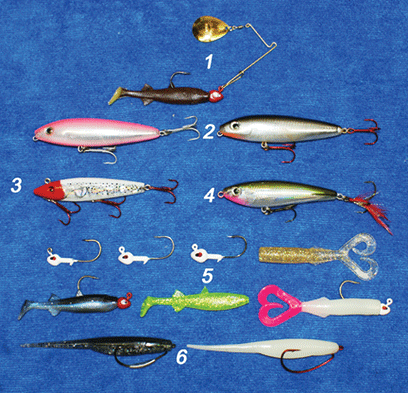
The best artificial baits are shrimp and crab-like plastic worms and jigs. Shallow running spoons and baitfish-shaped plugs are also effective. Anglers using poppers can expect explosive strikes from redfish cruising near the surface. Seasons may also impact the decision on which bait to use. Generally, in summer and Fall, redfish feed on crabs, shrimp, and mullet.
However, they primarily feed on pinfish, mullet, pinfish, sea robin, lizardfish, Atlantic croaker, and marine worms in winter and spring. Redfish are always looking for food; regardless of the environment or water depth, they adapt themselves to any situation. As a rule of thumb, if using live bait, use what’s in the water. If using artificial lures, try to imitate the baitfish or other prey that’s around.
Techniques
Bull reds on the beaches usually target mullets, so a popping cork with soft plastic is effective on the beach. Redfish will also cruise in the surf, right along with the breaks. The translucent blue tail always gives them away. Surf fishing is prevalent along the east coast. Surf fishing can involve wading in the water or fishing from the shoreline. If offshore fishing, Reds will roam in depths up to 30 feet deep. While trolling, watch for birds and blowups at the surface.
Tides
Tides play a significant role in the daily movements of redfish, especially in shallow water. Anglers can catch redfish in many different depths, but where they are and what they are doing will determine how you catch them.
In general, high tides, also known as the flood tide, will push redfish into the shallow flats. The low tide will pull them out of the shallows into the drop-offs with deeper water. This varies based on location and how much the high tide and low tide change. An effective artificial lure to use on the high tide or flood tide is one that imitates fiddler crabs. Red drum fishing during the flood tide may involve more blind casting rather than sight fishing.
Sight Fishing
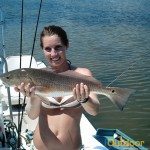 Sight fishing for redfish has become the norm for fishing redfish in many areas in Florida, with poling platforms on your boat and a strong trolling motor. The hunt is on when you know the tides and when the fish move onto a particular flat to start feeding. Sight fishing for redfish is the ultimate sportfishing experience. In many Florida mudflats, the best time to sight fish a redfish is on the incoming tide. During this time, the tide is still low enough to see the fish but high enough to hold the fish and is pushing bait towards the shoreline, creating a feeding frenzy.
Sight fishing for redfish has become the norm for fishing redfish in many areas in Florida, with poling platforms on your boat and a strong trolling motor. The hunt is on when you know the tides and when the fish move onto a particular flat to start feeding. Sight fishing for redfish is the ultimate sportfishing experience. In many Florida mudflats, the best time to sight fish a redfish is on the incoming tide. During this time, the tide is still low enough to see the fish but high enough to hold the fish and is pushing bait towards the shoreline, creating a feeding frenzy.
Seasons may also impact where to spot reds. In the winter and spring, the Florida water is generally lower, cooler, and clearer. On sunny days the redfish will move onto the flats, where the water will warm up quicker in the sun making for ideal conditions for sight fishing for redfish. Florida waters are generally less clear in the warmer months, but spotting fish is still possible on grass flats near the edges of deep areas.
Tailing Redfish Fishing
One of the most amazing sights while fishing for redfish is spotting a tailing fish. This means they are face down in the mud looking for crabs and shrimp with their tails sticking through the surface of the water. It’s a beautiful sight and an exciting moment while fishing. The best time to catch a tailing fish is usually on the incoming tide while the water is still low enough for redfish tails to break through the surface. Anglers will usually have to cast closer to the fish to get noticed.
Red Drum Regulations
The slot limit is no less than 18 inches throughout Florida, no more than 27 inches in length. The daily bag limit is one redfish per person per day. The exception is the Northeast area in Flagler through Nassau counties, where the daily bag limit is two fish per person per day. Also, all Florida state waters from Hernando county through Collier County are catch and release only through May 31st.
Record
The all-tackle world record for the heaviest redfish caught was 94 pounds, 2 ounces. The Florida record is 52 pounds, 5 ounces.
